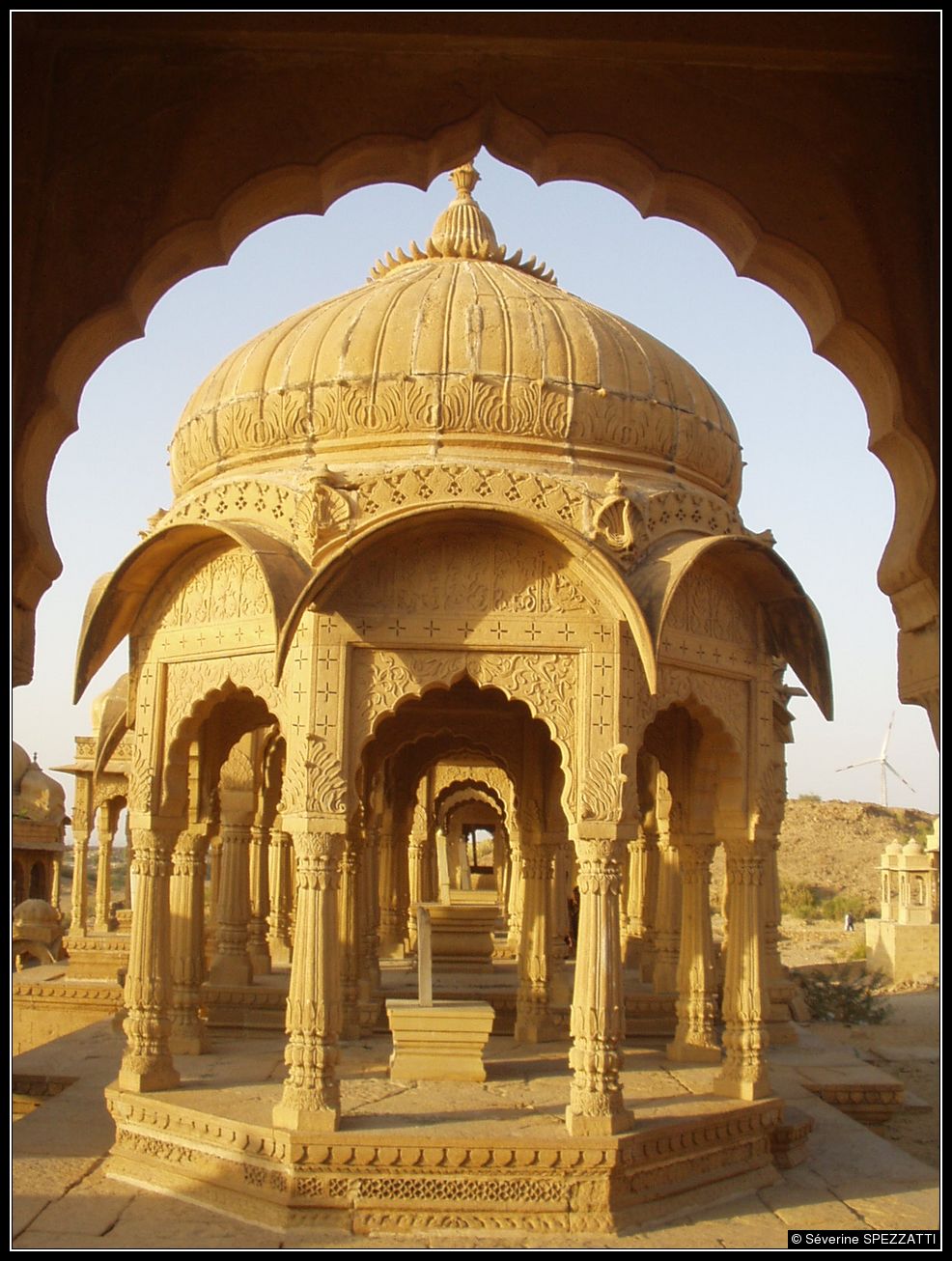Character
Jauhar
Saka
The next morning after taking a bath, the men would wear kesariya and apply the ash from the maha samadhi of their wives and children on their foreheads and put a tulsi leaf in their mouth. Then the palace gates would be opened and men would ride out for complete annhiliation of the enemy or themselves. Rajput men and women could not be captured alive.
One example of this is war between Puran Mal of Raisina and Sher Shah Suri. The opposite is true for wars between Marathas and Rajputs, where even after battle reversals, no jauhars took place in Rajasthan.
Rajput Chivalry
The chivalry of the Rajput and the influence of the fair in the formation of rajput character is depicted here. It is taken from the annals of Jaisalmer, the most remote of the States of Rajasthan, and situated in the heart of the desert, of which it is an oasis.
Rao Raningdeo Bhati was lord of Pugal, a fief of Jaisalmer. His heir, named Sadhu Bhati, was the terror of the desert, carrying his raids even to the valley of the Indus, and on the east to Nagore. Returning from a foray, with a train of captured camels and horses he passed by Aurint where dwelt Manik Rao, the chief of the Mohils, whose rule extended over 1140 villages.

Being invited to partake of the hospitality or the Mohil, the heir of Pugal attracted the favourable regards of the old chieftain's daughter. She loved him for the dangers he had passed. Although betrothed to the heir of the Rathore of Mundore, she signified her wish to renounce the throne to be the bride of the chieftain of Pugal; and in spite of the dangers he provoked, and contrary to the Mohil chief's advice, Sadhu, as a gallant rajput, dared not reject the overture, and he promised "to accept the coco (Sriphala)" if sent in form to Pugal. In due time it came, and the nuptials were solemnized at Aurint. The dower was splendid; gems of high price, vessels of gold and silver, a golden bull, and a train of thirteen dewadharis (lamp holders).
Arankanwal (Aranya means waste in Sanskrit, Kamal is Lotus), the slighted heir of Mandore, determined on revenge, and with four thousand Rathores planted himself in the path of Sadhu's return, aided by the Sankhla Mehraj, whose son Sadhu had slain. Though entreated to add four thousand Mohils to his escort, Sadhu deemed his own gallant band of seven hundred Bhatis sufficient to convey his bride to his desert abode, and with difficulty accepted fifty, led by Meghraj, the brother of the bride.

Panchkalyan Marwari Horse.
Like a true Rajput, Jeytanga received the hostile message, and sent the envoy back with his compliments, and a request for some amal or Opium, as he had lost his own supply. With all courtesy this was sent, and prepared by the domestics of his antagonist; after taking which he lay down to enjoy the customary siesta. As soon as he awoke, he prepared for the combat, girt on his armour, and having reminded Panch Kalyan of the fields he had won, and telling him to bear him well that day, he mounted and advanced.
The son of Chonda, Arankanwal, admiring his sangfroid, and the address with which he guided his steed, commanded Jodha Chauhan, the leader of his party, to encounter the Pahu Bhati. "Their two-edged swords soon clashed in combat"; but the gigantic Chauhan fell beneath the Bhati, who, warmed with the fight, plunged amidst his foes, encountering all he deemed worthy of his assault.
The fray thus begun, single combats and actions of equal parties followed, the rivals looking on. At length Sadhu mounted: twice he charged the Rathore ranks, carrying death on his lance; each time he returned for the applause of his bride, who beheld the battle from her palki (palanquin). Six hundred of his foes had fallen, and nearly half his own warriors. He bade her a last adieu, while she exhorted him to the fight, saying, "she would witness his deeds, and if he fell, would follow him even in death." Now he singled out his rival Arankanwal who was alike eager to end the strife and blot out his disgrace in his blood. They met: some seconds were lost in a courteous contention, each yielding to his rival the first blow, at length dealt out by Sadhu on the neck of the disappointed Rathore. It was returned with the rapidity of lightning, and the daughter of the Mohil saw the steel descend on the head of her lover. Both fell prostrate to the earth: but Sadhu's soul had sped; the Rathore had only swooned.
With the fall of the leaders the battle ceased; and the fair cause of strife, Karamdevi, at once a virgin, a wife, and a widow, prepared to follow her affianced. The pile was prepared on the field of battle; and taking her lord in her embrace, she gave herself up to the devouring flames. The old Bhati, Rao of Pugal, had a tank excavated on this spot for her putravadhu (daughter-in-law), which is still called after the heroine, "the lake of Karamdevi."
